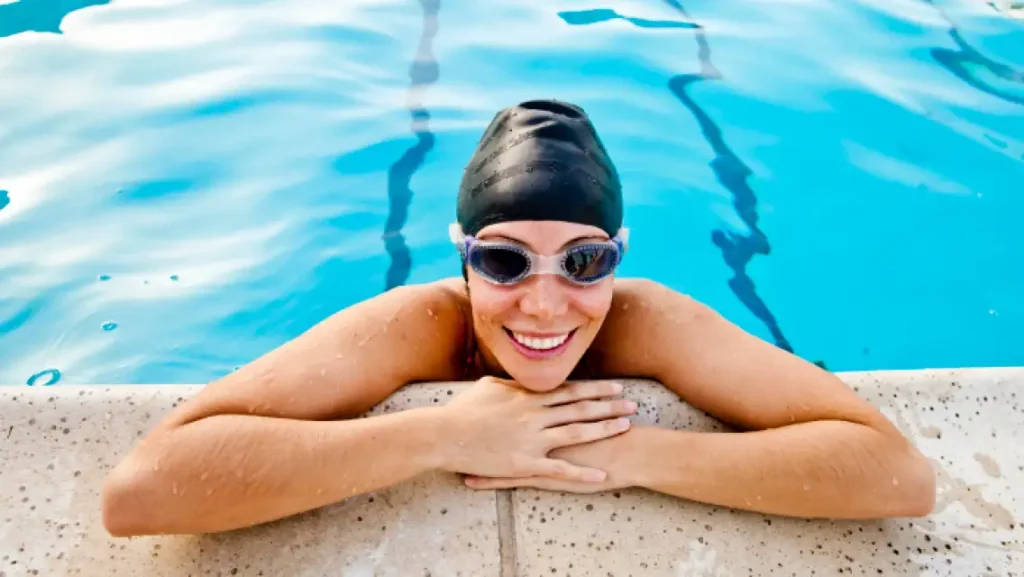Walking and swimming offer low‑impact workouts that strengthen cardiovascular health, muscles, and mood in middle‑aged women. These accessible exercises support weight control, joint flexibility, and stress relief — ideal for starting or maintaining a balanced fitness routine.
WomanlyZine.com
Looking to boost your health and mood after 40? This article explores why walking and swimming for middle‑aged women are essential for middle‑aged women, highlighting their benefits for cardiovascular fitness, joint flexibility, and mental well‑being to help you thrive daily.
As women enter their middle age, they often experience the onset of the menopause, which can lead to a variety of uncomfortable symptoms. Hot flushes, joint pain, and fatigue are just a few of the symptoms that women may experience. However, research has shown that exercise, particularly walking and swimming, can help alleviate these symptoms. In this article, we will explore the benefits of exercise for middle-aged women and why walking and swimming are essential.
Table of Contents

Understanding the Menopause
Before we delve into the benefits of exercise, it is essential to understand what happens during the menopause. The menopause is a natural biological process that marks the end of a woman’s reproductive years. It typically occurs between the ages of 45-55, with the average age being 51. During this time, a woman’s body undergoes significant hormonal changes, which can result in a variety of symptoms.
Hot flushes, night sweats, insomnia, and vaginal dryness are some of the most common symptoms. These symptoms can affect a woman’s quality of life, leading to fatigue, mood swings, and even depression. However, exercise has been shown to help alleviate these symptoms and improve overall health.
The Benefits of Exercise for Middle-Aged Women
Exercise is essential for everyone, regardless of age or gender. However, for middle-aged women, exercise can be particularly beneficial. Not only can it help alleviate menopause symptoms, but it can also reduce the risk of various health conditions, including heart disease, stroke, and certain types of cancer.
Regular exercise can also improve bone density, which is crucial for women as they age. As women reach menopause, their estrogen levels decrease, which can lead to a loss of bone density. This can increase the risk of osteoporosis, a condition that weakens bones and makes them more susceptible to fractures.
Walking: The Perfect Exercise for Middle-Aged Women

Walking is one of the most accessible forms of exercise, and it is perfect for middle-aged women. It is low-impact, which means it is easy on the joints, making it an excellent choice for those with joint pain. Additionally, it can be done anywhere, making it easy to incorporate into a daily routine.
Research has shown that walking can help alleviate menopause symptoms, including hot flushes and joint pain. In a study of thousands of middle-aged women, those who did at least three 30-minute walking sessions a week were around a third less likely to complain of bad hot flushes and extremely painful joints. They were also less likely to be obese or depressed, and slept better.
Swimming: A Low-Impact Exercise with High-Impact Benefits
Swimming is another excellent exercise for middle-aged women. It is low-impact, making it easy on the joints, and it provides a full-body workout. Additionally, swimming can be a social activity, which can be beneficial for those who may feel isolated during the menopause.
Research has shown that swimming can help alleviate menopause symptoms, including hot flushes and joint pain. In a study of thousands of middle-aged women, those who swam at least three 30-minute sessions a week were around a third less likely to complain of bad hot flushes and extremely painful joints.
Other Exercises to Consider

While walking and swimming are excellent exercises for middle-aged women, there are other exercises to consider. Yoga, for example, can be an excellent way to alleviate joint pain and improve flexibility. Additionally, weight-bearing exercises, such as strength training, can help improve bone density and reduce the risk of osteoporosis.
The Importance of Staying Active
Despite the benefits of exercise, many middle-aged women are not active. In the study of thousands of middle-aged women, fewer than a third were active. However, staying active is crucial for overall health and wellbeing. Regular exercise can reduce the risk of various health conditions, including heart disease, stroke, and certain types of cancer.
Additionally, staying active can help alleviate menopause symptoms and improve overall quality of life. It can reduce fatigue, improve mood, and even help with sleep.
Conclusion
In conclusion, exercise is essential for middle-aged women, particularly those going through the menopause. Walking and swimming are two of the most accessible and beneficial exercises for women experiencing menopause symptoms. However, other exercises, such as yoga and strength training, can also be beneficial. Staying active is crucial for overall health and wellbeing, and it can help alleviate menopause symptoms, reduce the risk of various health conditions, and improve overall quality of life. So, lace up your sneakers or grab your swimsuit, and start reaping the benefits of exercise today!

FAQs
Why is walking beneficial for middle-aged women?
Walking boosts cardiovascular health, aids weight control, supports joint flexibility, and enhances mood—making it a perfect low-impact exercise in your fitness routine.
How often should middle-aged women swim?
Aim for 2–3 swim sessions per week to improve cardiovascular endurance, muscle tone, and mental well‑being through this low-impact exercise.
Can walking and swimming help with joint pain?
Yes, walking and swimming are low-impact exercises that reduce pressure on joints, increase flexibility, and relieve stiffness—ideal for middle-aged women.
Which is better for fitness: walking or swimming?
Both are excellent; walking is easy and accessible, while swimming offers full-body resistance and cardiovascular benefits. Combining both delivers the best results.
How can I start a walking and swimming routine?
Begin with 20–30 minutes of walking or swimming 2–3 times weekly. Gradually increase duration and frequency, and pair with stretching for joint flexibility.




